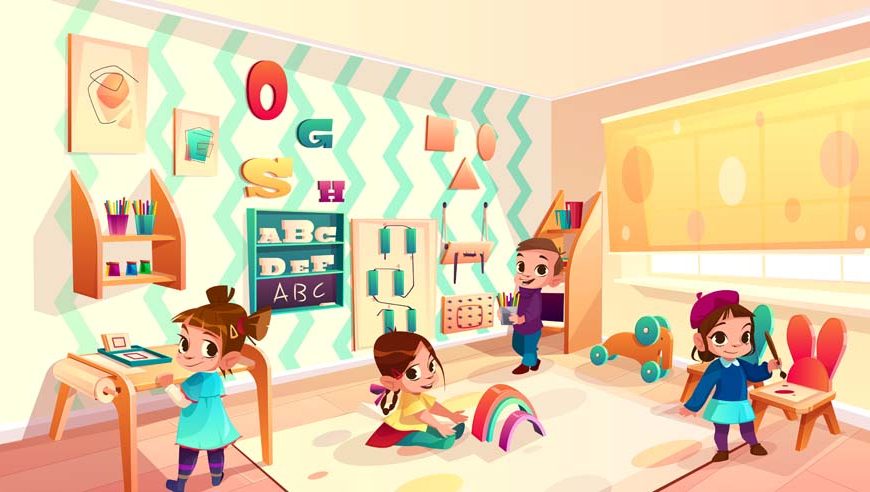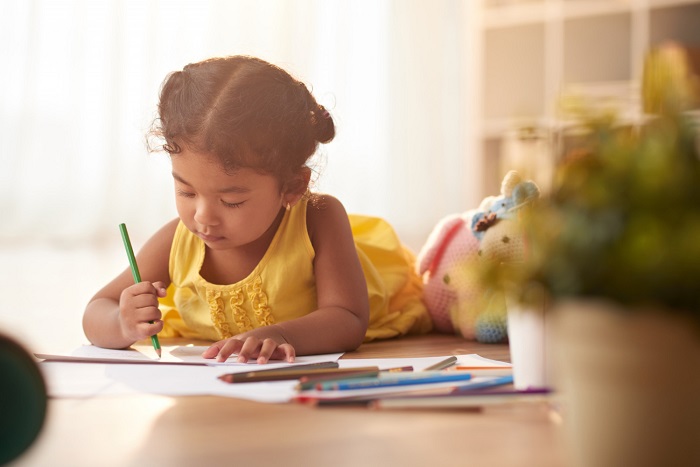When it comes to school, the general picture is a classroom full of kids of the same age group who learn the same things, irrespective of their grasping capabilities. However, if you want to give your child that space to learn and progress at his/her own pace, especially in their early years, you must then consider the concept of multi-age classrooms. Here, we help you understand the subtleties of a multi-age classroom and the pros and cons of the same, to help you make a well-informed decision.
What Is a Multi-age Classroom Setup?
Schooling in the early years of a child’s development is not just about education. It is all about how to help the child explore more about himself and the surroundings, at his individual pace. Multi-age preschool classrooms give that freedom to children. There is a mix of kids across age groups, spanning a difference of 6 months to 2 years, most commonly. So each child is at a different level of cognition and learning. Such classrooms are usually the primary attribute of Montessori, Waldorf, and Reggio Emilia-inspired programs. Now, for those learning about this for the first time, there might be many doubts and questions regarding such a system.
To help you fathom it right, let’s dive straight into the benefits of such a classroom setup and also see if there are any considerable challenges involved.
Benefits of Multi-age Classrooms
- Learning at an Individual Pace
- Growing And Exploring Together
- Novel Ways of Teaching
- Promotes Emotional Well-being
- Provides a Safe And Stable Outlet
- Inclusivity And Acceptance
The most important characteristic of a mixed-age classroom is that the children learn at their individual pace. There is no one-size-fits-all kind of curriculum here. Concepts and study materials are made accessible to each child, irrespective of their age or learning capabilities. While a 3-year-old toddler may be more inclined towards numbers, you may find a 6-year-old immersed in figuring out scientific experiments. However, no child’s progress is ever deemed slow or fast here. The teachers enable a sense of independence and accomplishment in each child, every day.
Children in their early ages learn through observing and imitating. When a 3-year-old kid sees a 5-year-old child take out a library book, flip pages, read, and keep it back on the shelf, the tiny toddler strives to do the same. Similarly, older children get a revision of their concepts and knowledge gained, when they explain or show the younger kids how an activity is done. Such mixed-age classrooms benefit all age groups thereby.
While teachers explain the concepts and help the children explore more of the activity of their interest, kids learn more by doing things together. Kids at the same progress level and interest in common things can be grouped to help each other with their individual ideas and approaches.
Montessori, Waldorf, Reggio Emilia or other approaches of education that thrive on multi-age classrooms, have their unique ways of teaching and learning. Children, as soon as they enter the class, are free to move around and pick up the activity they are inclined towards. Many such activities are based on real-life experiences, like learning to pour water, sieving, cleaning your own mess, keeping your things back in place, and exploring numbers, language, geography, and science through various interesting hands-on study materials.
Such a novel approach to teaching and learning makes them more responsible and careful of their belongings and surroundings. Furthermore, the interaction with kids from different age groups also mimics their real-life play and social situations. This enables them to be more proactive, helping them forge friendships and connections.
More often than not, in a multi-classroom setup, there are no formal exams or assessments till up to grade 4 or 5. No one feels left behind and there is no peer pressure or comparison which is common in conventional same age group schools.
With everyone learning at their own individual pace, there is always some progress for each child. This not only helps add to their self-confidence but also avoids any unwanted anxiety and pressure to meet academic expectations.
Usually, in multi-age classrooms, the kids of all age groups are clubbed with teachers and caretakers spanning a cycle of 3 years. That way, they literally grow together, enabling them to understand and handle changes better. The teachers can also better assess and encourage the children based on their long-term observations. Such a setup provides a safe and stable place of belonging and bonding for the children, with each other and the teachers as well.
Mixed-age classrooms are not only inclusive of different age groups but also encourage acceptance of uniqueness and diversity in many ways. Children of various levels of capabilities and learning styles are motivated to participate in activities together. Children feel accepted and happy with who they are, at their individual level of understanding and potential.
Challenges of Multi-age Classrooms
In case you are wondering about multi-age classroom disadvantages, here are a few things you would need to be aware of:
- Limited Resourceful Teachers
- Discipline Issues
- Unique Curriculum Requirements
- Transition Challenges
While most children can benefit from a multi-age classroom, not all teachers can lead such a setup. Teachers need to be properly trained in the Montessori, Waldorf, or Reggio Emilia education system to gauge the benefits and subtleties of this mixed-aged teaching system. The observations of these teachers play a vital role in the smooth learning and development of each child as per their age and capabilities in a mixed-age classroom.
In a conventional school setup, for example, all kids in a class are around 7 years of age, so can comprehend and follow a particular set of instructions. However, in multi-age classrooms, the teachers need to decipher ways and words, which can be easily understood by all children of varying age groups in the class.
While this may seem challenging, the novel education approach here encompasses ways and methodologies to enable each child. Similarly, while there could be more scope for conflicts and disagreements, there is also the potential for kids to learn how to cooperate and resolve conflicts.
Multi-age classrooms are primarily found in the Montessori, Waldorf, Reggio Emilia and a few other alternate education approaches. These have their unique curriculum, which primarily focuses on a “follow the child” ideology. As a result of which, you may not be able to discuss certain topics or curriculum expectations with other parents, because your kids are at different ages and levels of understanding.
However, parents who opt for such an education system, already know these subtleties. Not having a formal exam for an initial 8-10 years, may be a relief for some parents, while a few others may be lost in gauging how well their child is doing academically.
In a multi-age classroom, each child’s progress is considered as per their individual interests, achievements, and performance in individual subjects. However, when they are moved to a traditional school setting in higher grades, it may not be as easy to deal with the changes and the pressure to match the academic expectations for that grade.
Multi-age classrooms provide a great opportunity for children to stay their innocent curious selves for most of their early childhood. This inclusive and progressive setup fosters a strong foundation of holistic learning and social, emotional, and overall healthy development of children. We hope that the above in-depth ideas of a mixed-age classroom encourage you to give this unique methodology of education a try for your child!














